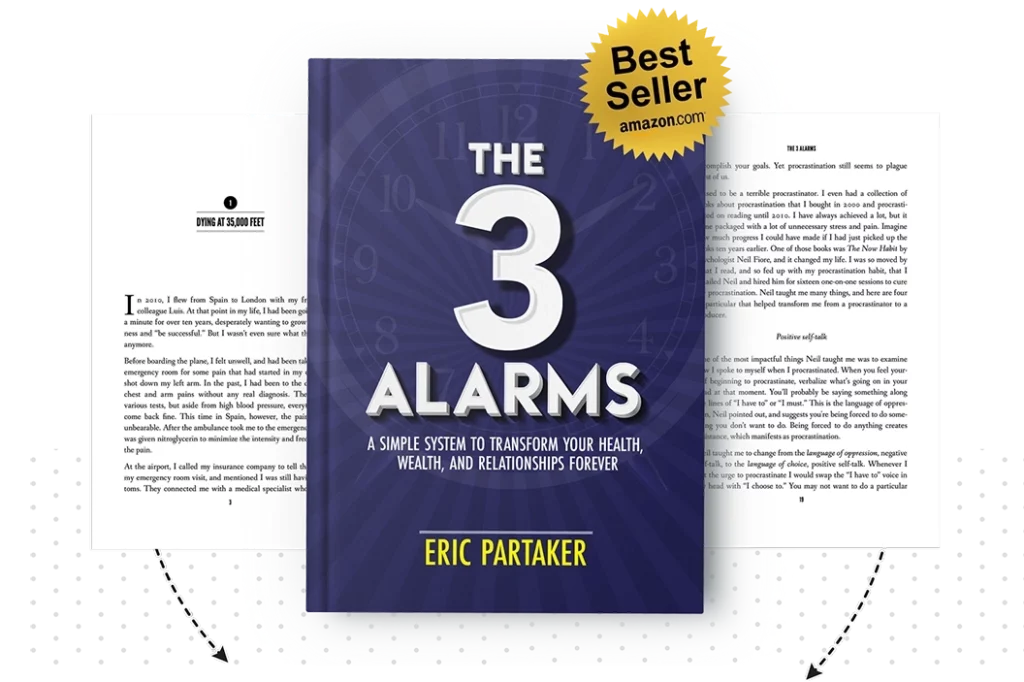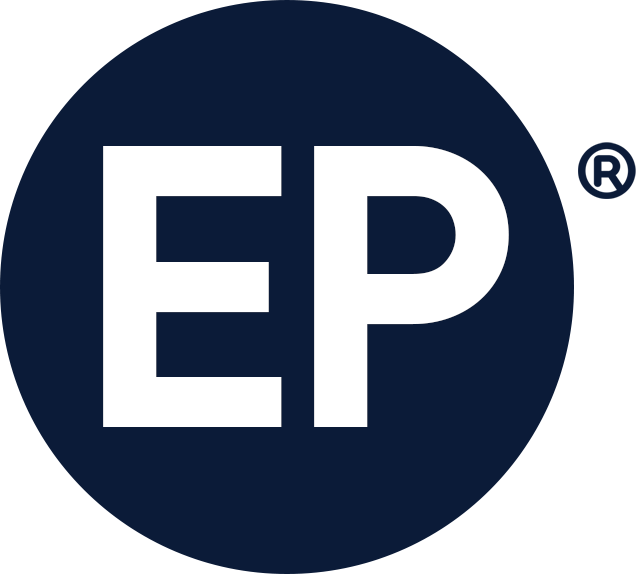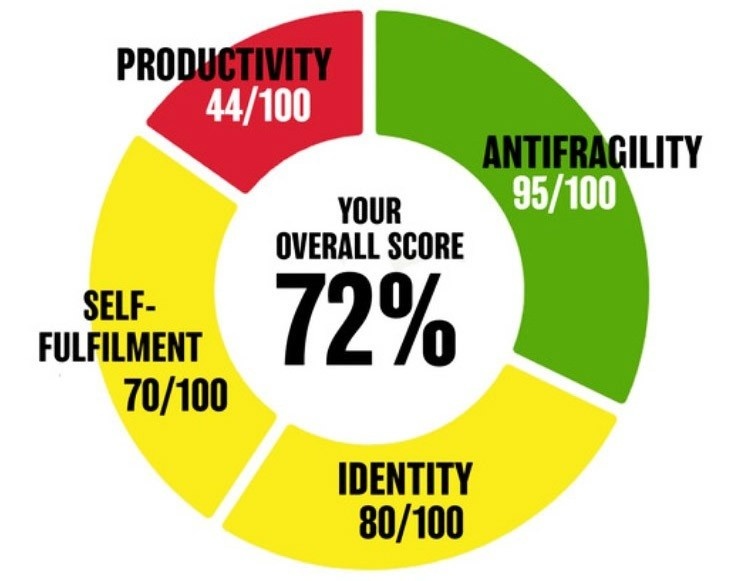SUMMARY
- Do you struggle to switch-off from “work mode” and switch-on into “home mode”? Separating our work and home lives can be tough, especially when there’s always so much to do, but unless you make a change, your work and relationships will continue to suffer.
- I used to struggle with this too, often working late into the night until I implemented a Shutdown Ritual, a habit I picked up from Cal Newport’s incredible book, Deep Work, this is unlikely to change.
- Your shutdown ritual is a static appointment that goes into your calendar Monday-Friday, which marks the end of your work day and the beginning of your home life.
- There are 5 things you want to incorporate in your shutdown ritual, which should be added to the block in your calendar: 1) Check your email 2) Check tomorrow’s calendar 3) Update your to-do list 4) Pick your top 3 tasks for the next day 5) Add those top 3 items to the white space in your day
- The benefits of having a shutdown ritual include increased productivity, better sleep and improved relationships, but for it to work properly, you need to be disciplined about respecting it to fully establish the habit.
TRANSCRIPT
Have you ever felt like you can’t properly separate work from home? Like it all kind of blends together and you’re constantly working into the night? Or maybe you’ve stopped working and maybe you’re sitting at your dinner table and your wife or your husband tells you, “Hey, you’re not really here” or “the kids want to play and you’re not really engaged”. Have you ever felt like there’s just never going to be enough time to get your work done and you can’t properly make that transition, focus on your family or on your relationships? Look, I felt this way too, for years actually. I really struggled with it. I really struggled with making that divide strong between work and home. I felt like the work was never-ending, that I was always having to work late into the night.
But then I came across this really amazing principle of a shutdown ritual in the book, Deep Work, by Cal Newport, and I really encourage you to read this. If you haven’t read the book, it’s a fantastic book. Today I want to show you how you can implement this simple routine to immediately create more presence in your home life, and less stress in your work life. I know you’ll even be able to sleep a lot better as well. The shutdown principle is simply the following: we need to have a concrete time every day when we shut down our work, when we’re going to transition from deep work to kind of like deep love, if you will. And it needs to be a static appointment that we keep with ourselves.
What I suggest you do in your calendar is literally create an appointment that says “shutdown”. And you schedule that appointment. You name the appointment that “shutdown”, and you schedule that appointment for 30 minutes before you would like your workday to end. In the meeting description of that appointment, I’d like you to write a five step checklist. Step one is you should do a final look at your email. So go through your email and see if there’s anything that you need to urgently respond to – see if there are any important items that you need to respond to. Anything that’s going to require more than a two minute response. You should actually just record a to-do list item for the next day or future days.
So that’s the first thing on the checklist within the meeting description of the appointment and your calendar, which is called “shutdown”. First item on the checklist is email scan. The second item on the checklist is to go ahead and look at the next day’s calendar. I want you to look at what meetings you have coming up. How do you need to be showing up for those meetings? Is there any work that you need to be preparing for those meetings? How would you show up with excellence in those meetings? Then look out more than just one day, even a couple of days out, and get a sense of what’s coming up so that you have the full picture there.
The third item in your checklist is updating your to-do list with any actions that came from the day that might have also been prompted by the first two items. Right? So doing that email scan and looking in your calendar of what’s next, but go ahead and update your to-do list with any meeting notes or any actions that arose during that day.
The fourth item on your checklist is to pick your top three things that you’re going to do the next day; the top three most important tasks that you’re going to work on.
The fifth item on your checklist and the most important is you need to drop in those top three items into the white space of your day. What do I mean by white space of your day? All the space in your calendar where you don’t actually have an appointment at the moment, these are appointment slots that you should make with yourself to work on one of those top three items. You’re literally dropping them into the blank spaces of your day, the white space in your calendar, if you will. Once you’ve completed all of this – Cal says that he does this in his book, which I thought was kind of funny, and I’ve tried myself. You literally close your laptop down and you say “shutdown complete”.
Now here’s the key thing that you need to do. In the evening, after this point, any time a thought comes in your head or a worry or concern about work, you can say to yourself, “I need not be worried about this because I know I’ve checked everything and have properly accounted for everything that needs to be done for both today and tomorrow”, because you literally have thought about it. You’ve checked your email, right? You’ve looked at the calendar the next day ahead. The next day that you’ve updated your to-do list with any action items for the day, you’ve picked your top three things for the next day. And you’ve even dropped those top three things as appointments into the calendar of your day. So you know exactly what you’re going to be doing. You’re going to make the most of your time outside of meetings.
What are the benefits of doing this? Why should you do this? Well, there’s three benefits, really. One is when you shut your day down properly, you’re going to feel a lot more present and available with your family members because you’re not going to be constantly thinking through, “Oh, did I remember that one thing” or, “Oh, hang on”, “Oh, I need to call that person”. Or, “Oh, I wonder if there’s anything in my inbox” or “what’s going on tomorrow”, or “what am I doing tomorrow?” You’ve taken all of that and it’s already done. You’ll suddenly notice an increase in your presence and availability as you’re sat down at dinner or as you’re playing with your kids or hanging out with your friends, because you’ve properly thought through everything. The other wonderful thing is that you’ll sleep a lot better. Cause think about this. How many times have you woken up during the night thinking about, “Oh, there’s this idea” or “is this that thing that I overlooked or forgot about?”. Or maybe you have trouble getting to sleep because you work way too late into the evening, so your mind is way too active. You’re going to sleep a lot better as a result too.
The third and most incredible benefit from a productivity point of view is that, you’re just going to flat out become more productive, because the next day you’re going to start knowing exactly what you should be working on. And it’s really important too, that when you start that next day, don’t start it in your inbox. Don’t start it, allowing yourself to be bounced from one person’s agenda to the next – instead, start working on one of those top three things. One of those things that are going to really move the needle for that day in service of your goals for the week and service for your monthly goals, your 90-day goals, your goals for the year.
If you don’t have any goals for the week or monthly goals or 90 day goals or goals for the year, I have loads of other videos about goal setting that can help you in that regard too. So be sure to look up some of those as well.
Now with the shutdown ritual, I want to tell you about a story – a story of a client. I regularly coach CEOs and entrepreneurs from billion dollar companies all the way down to companies with only a hundred thousand in revenue or some even pre-revenue – they’ve just done their series or initial round of funding. According to a pretty wide range of CEOs and entrepreneurs, they all tend to have the same issue or problem: they don’t properly shut down their day. Their work and home life becomes blunted together. They’re not present. They don’t feel like they’re always on top of things. There is no divide.
We’ll call this client Tony. Tony had exactly this issue. And once we installed this shutdown routine, frankly, he had trouble following it for the first few weeks. So the appointment would come up in his calendar, he would see it. And he would feel compelled to keep working on other things. But after a while, Tony started to experience the benefits of doing the ritual. Every time that he did it, he said that in fact, he did feel more present with his wife and family. He said that he did sleep better. And he said that he started his day the next day much more strongly, and in a much more productive fashion – but it didn’t happen overnight.
He had to gradually work on this, and it happened over the space of a month. He got very, very good at respecting the shutdown. Because that’s all, ultimately, what we’re talking about – for you to put an appointment in your calendar and then respect that appointment. As you would respect an appointment with someone else. When’s the last time for example, you met with somebody and then during that meeting, 13 minutes into it, you just got up and left or you showed up 17 minutes late for it? Or suddenly you picked up a phone call and just stopped talking to the person and started talking to another person and never returned to the conversation? It would be completely ludicrous, right? You would never do that.
The primary challenge that we face with implementing this technique is just to respect the habit and just to respect the appointment and show up for it and do it. But trust me, if you shut down your day with this five point checklist, you will become more present, sleep better and become more productive.




